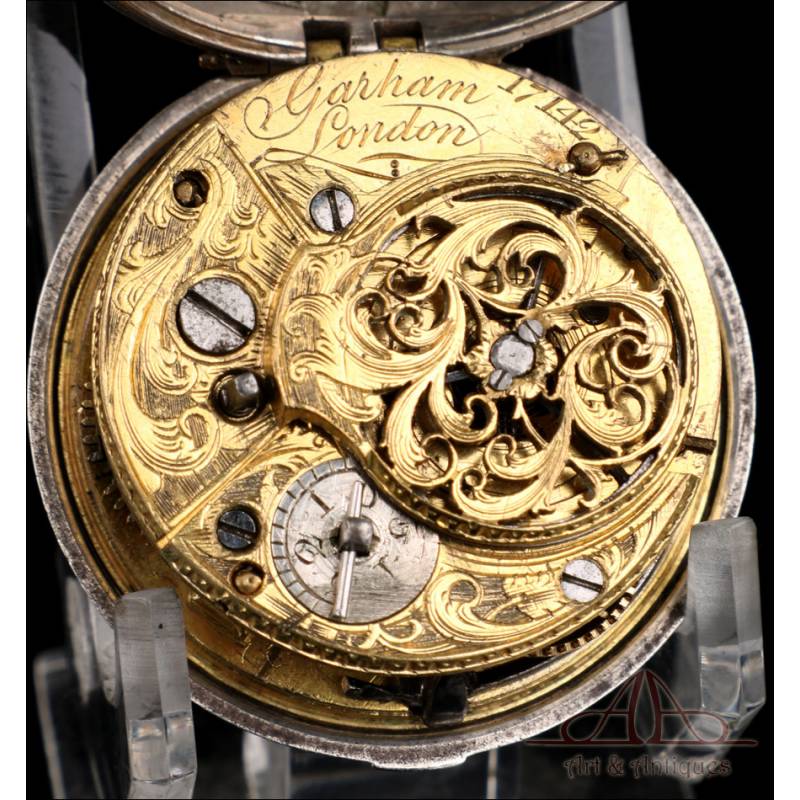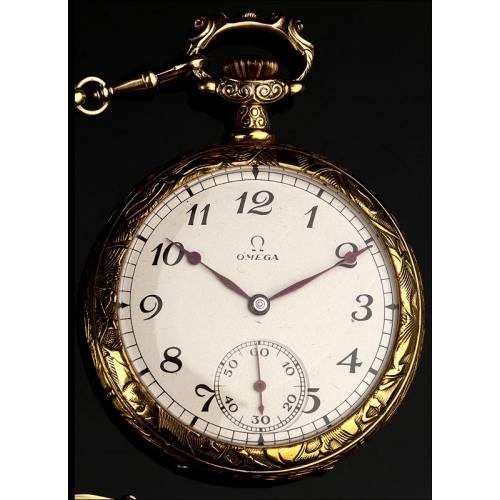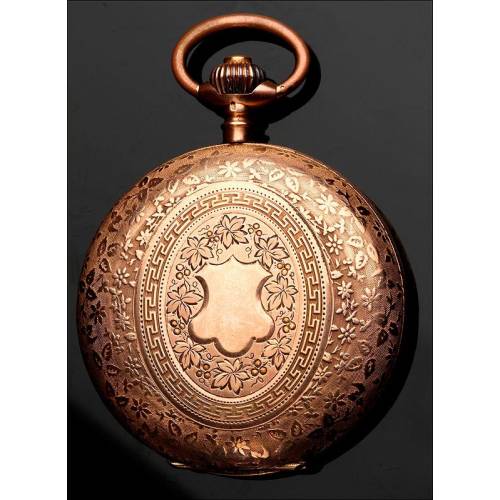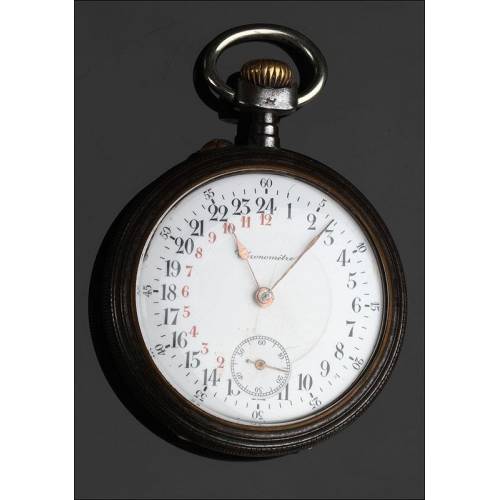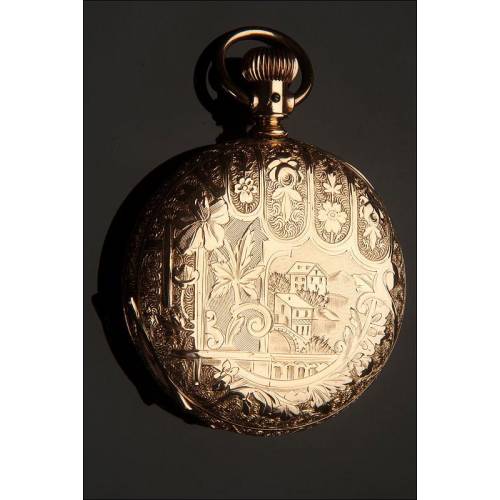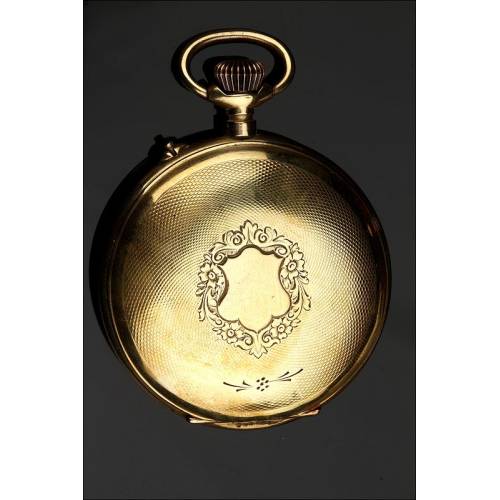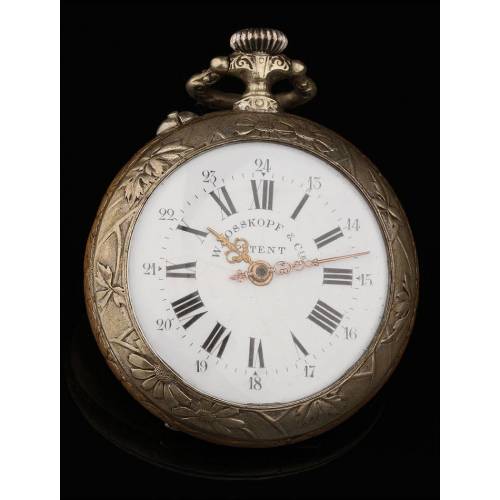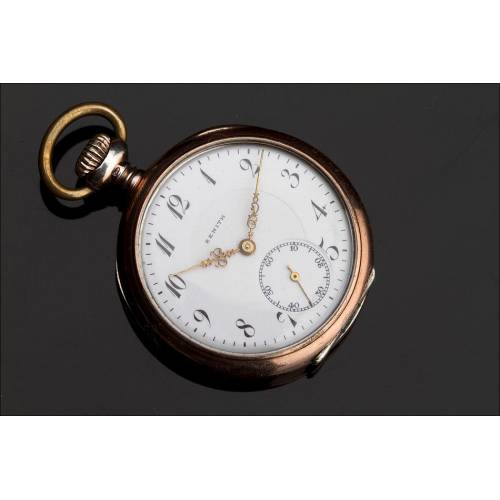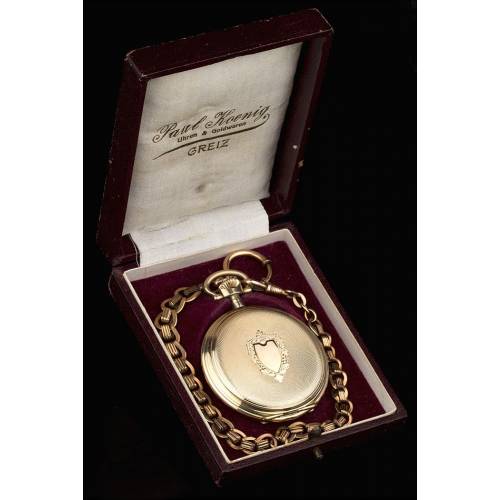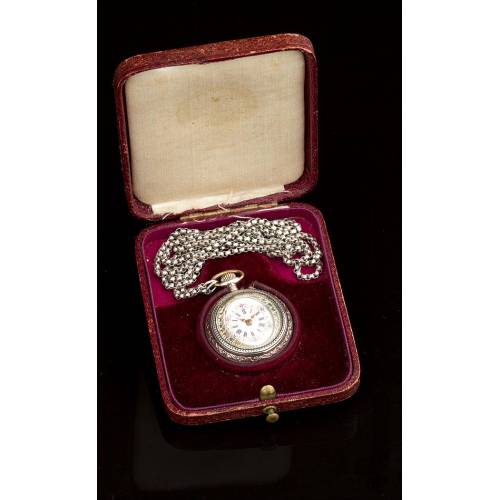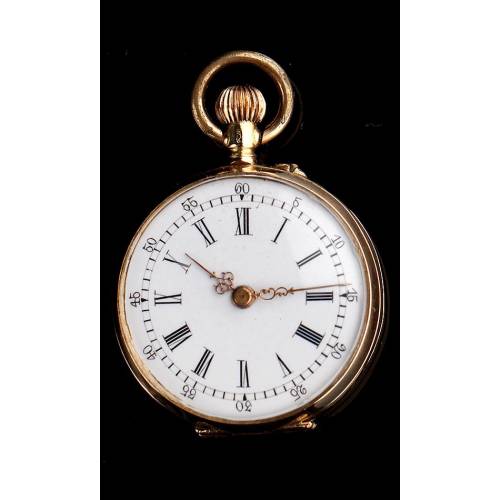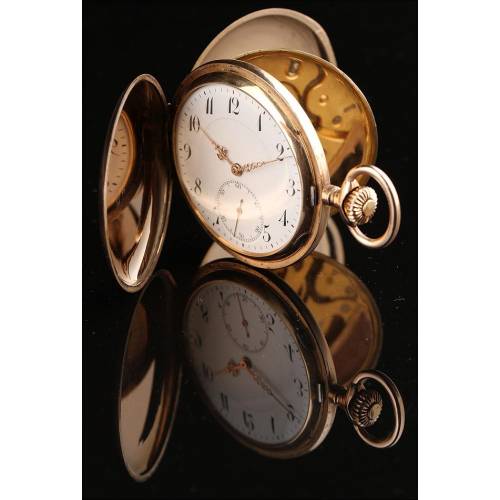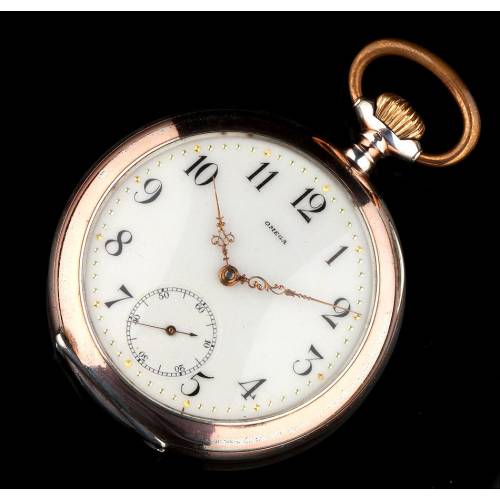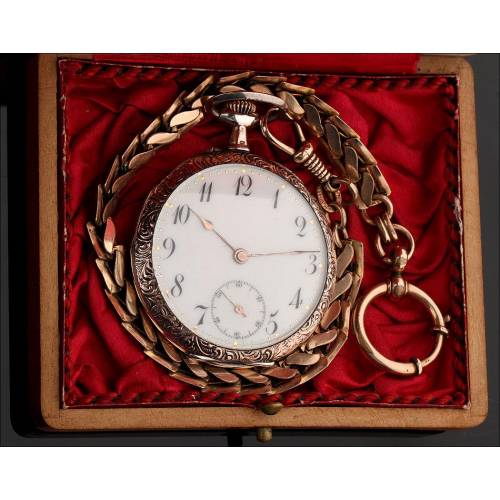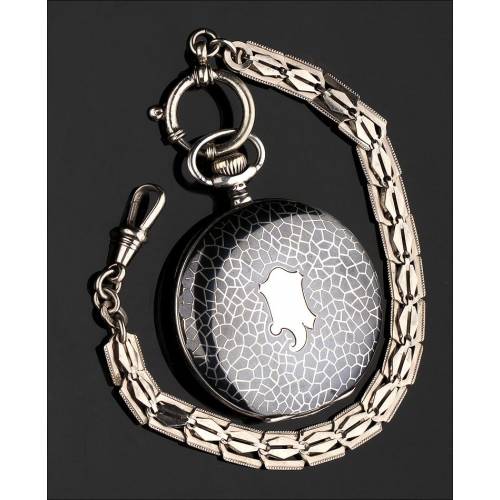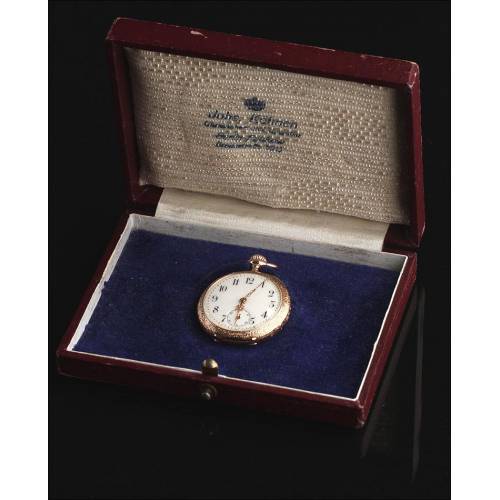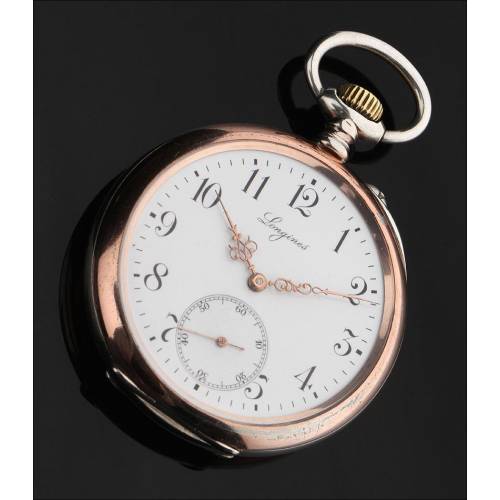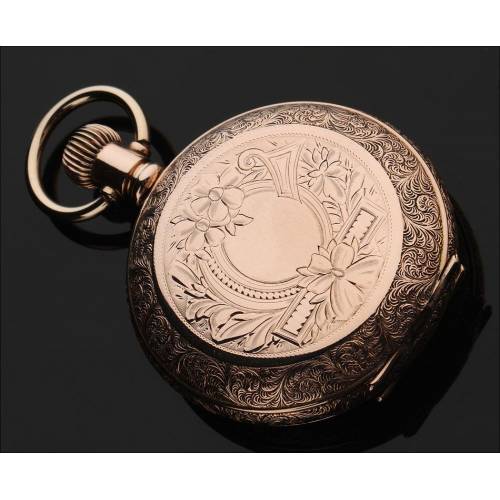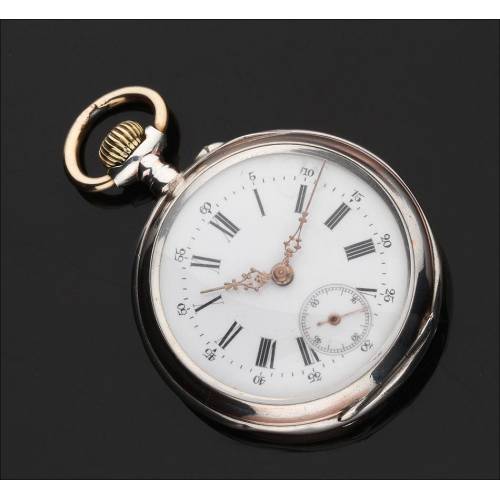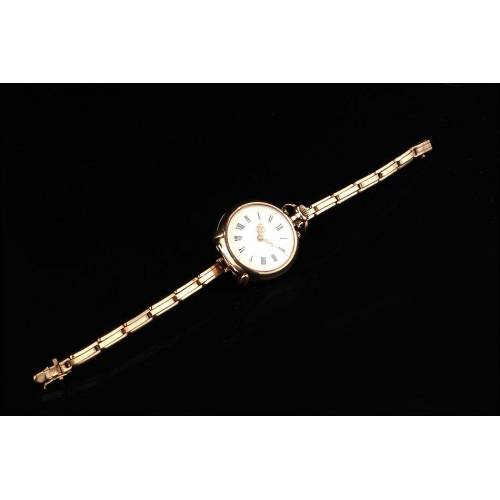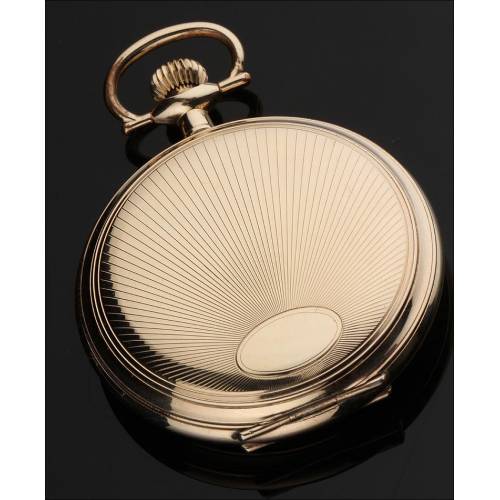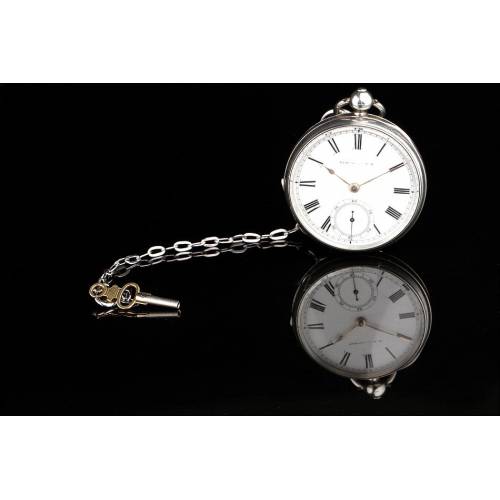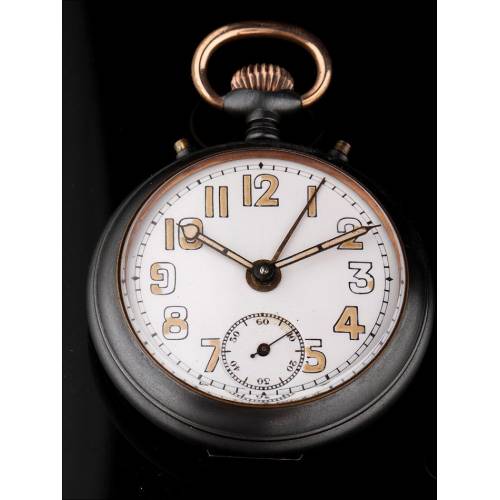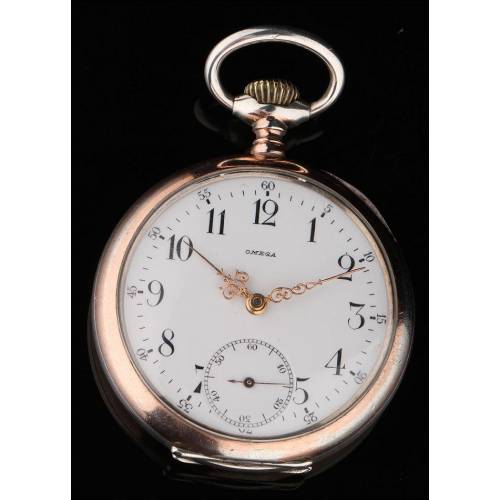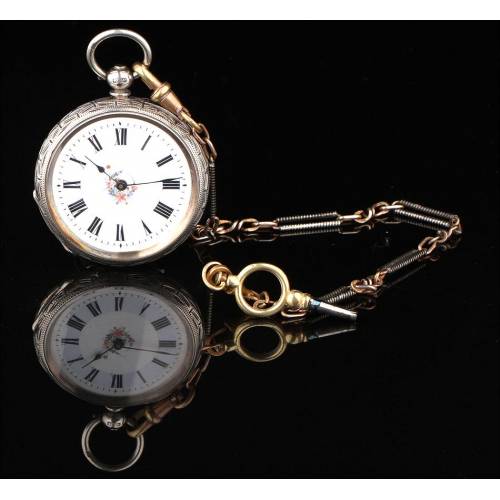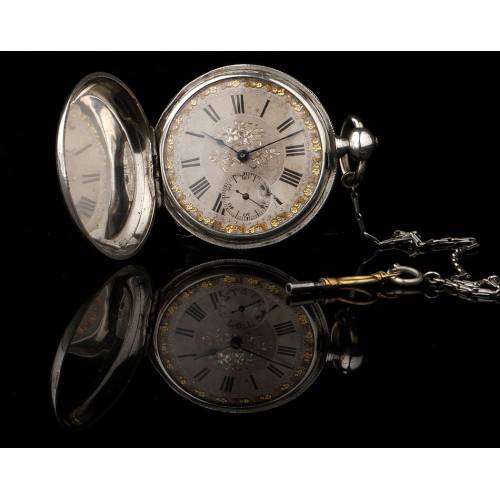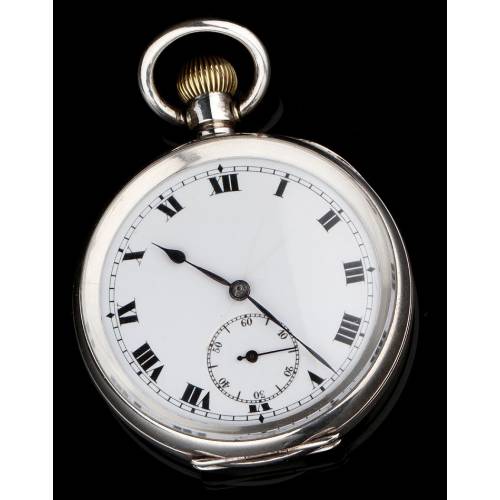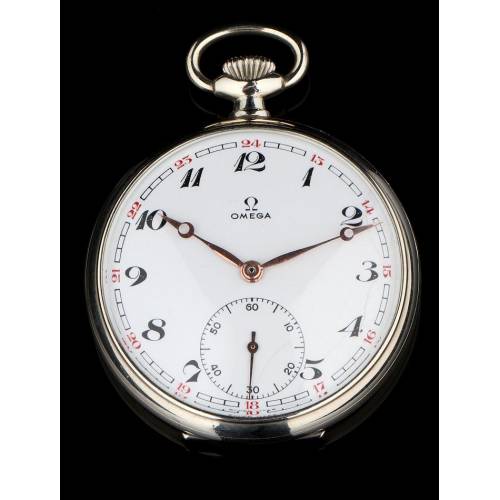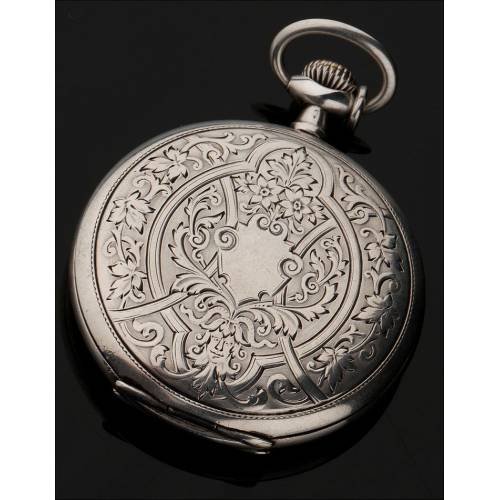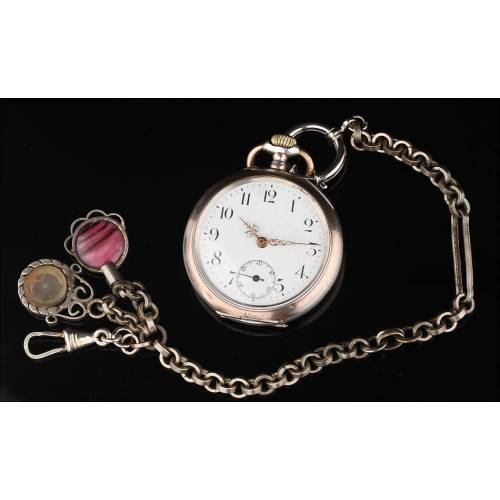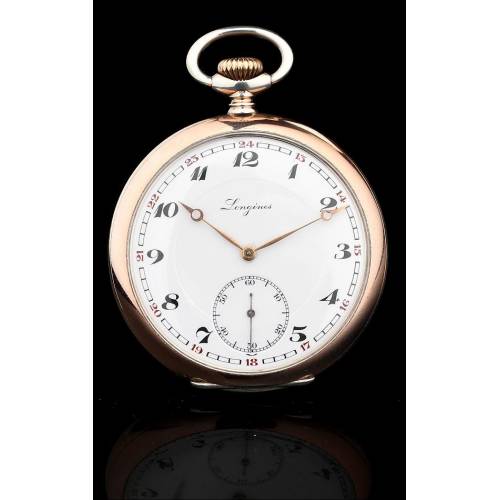C-814
Antique Double Silver Case Verge Fusee Pocket Watch. "Garham", London, 1769
Fine solid-silver verge-fusee pocket watch. Original from the 18th century. With hand-engraved decoration.
Sold!
Antique double silver case verge fusee pocket watch, made in London in 1760 and in excellent working order. This watch is an old-time piece, fine-looking and with inner case made by the English silversmith Thomas Gibbard.The movement contains a little mystery and is that it is signed "Garham, London" and yet there was never any watchmaker named Garham. There were, however, several watchmakers named Graham, so we can conclude that this is an error of the engraver of the plate of the watch and that the real name is Graham, the most famous of them being George Graham, who was already deceased when this watch was made, so it can not be him.According to the archives there are two London watchmakers who could have made this watch: Charles Graham, active from 1750 and John Graham, active from 1762. Given that the date of manufacture is 1769, it is very likely that the real watchmaker who made the watch is John Graham. This engraving error and the mystery surrounding it, makes it an even more special watch.The outer Case is made of sterling silver with an engraved scene in a cathedral, with the Minister visited by a winged angel on a type of chariot. This scene is surrounded by a plethora of large and smaller C scrolls, while the bezel is decorated with foliate images and scrollwork while enclosing a bulls eye crystal. The outer case is hinged. The rear cap has a watch paper for John Wells, clock and watchmaker who was in business until his death in 1810.The inner case is made of polished sterling silver, It mounts long stemmed pendant and ovoid bow, placed at the twelve position relative to the dial and dating from 1769, according to the English hallmarks on the inside of the case. The hallmarks: London assay office is shown by the Leopard with a crown on his head indicating the piece was made prior to 1822; the lion passant for Sterling Silver, and the Olde English form of O for the year 1769. The back cover is marked with three old style initials, likely one of the owners. Therefore, the inner silver case was made in 1769 and was made by Thomas Gibbard, a silversmith and casemaker working from 1773 to at least 1812.The watch has a white enameled dial with Roman numerals, closed minute track with Arabic markers placed every five minutes around the circumference of the dial and steel Beetle and Poker hands. A button lever at the six opens the case exposing the movement, a verge escapement with its contrate wheel and chain-driven fusee movement. The plates are separated by square-baluster pillars, and a type of pierced brass fret with multiple foliate designs. This type of pillar and fretwork is seen mostly post 1790 into the early 19th century. There is a single key winding arbor for winding the fusee. As mentioned above, the movement is signed "Garham, London, 17142", being Garham an engraver's error and possibly corresponding to John Graham (circa 1762).This amazing antique double silver case verge fusee pocket watch is a very special item, in excellent working order.Dimensions: Outer Case: 50 mm. Inner Case: 42 mm.

